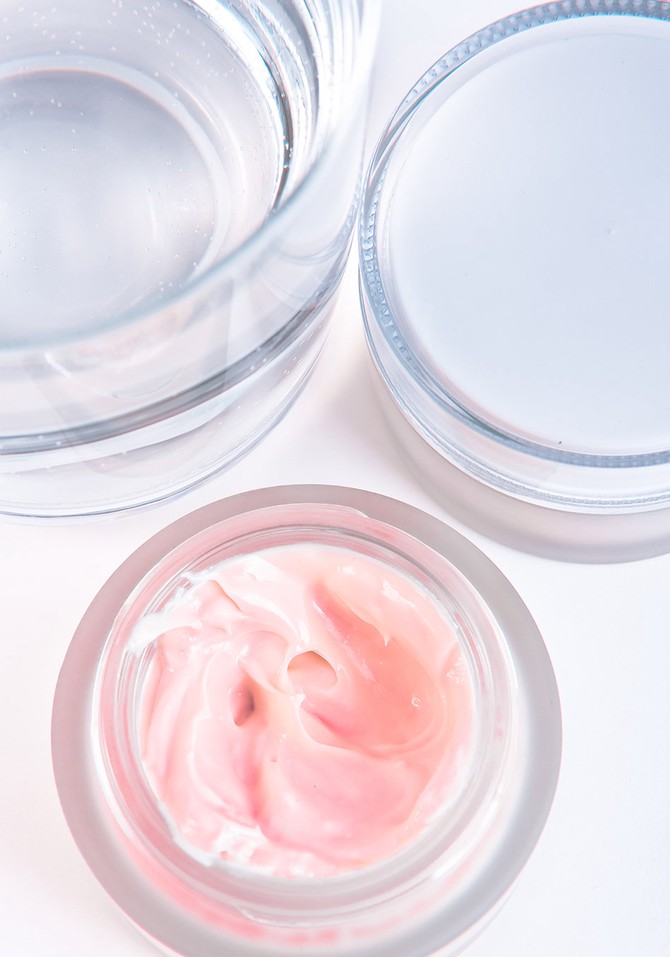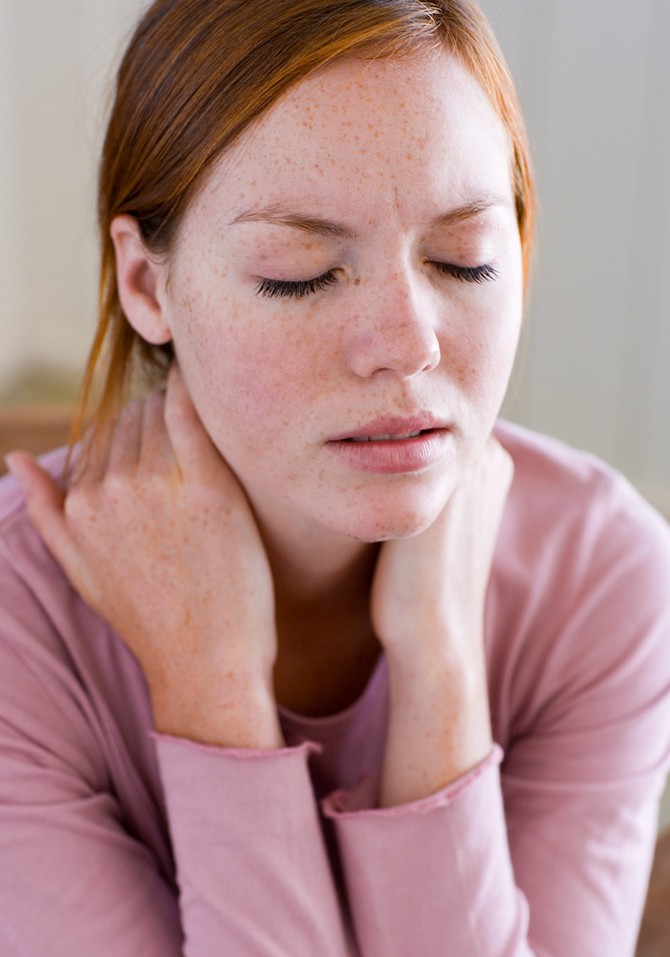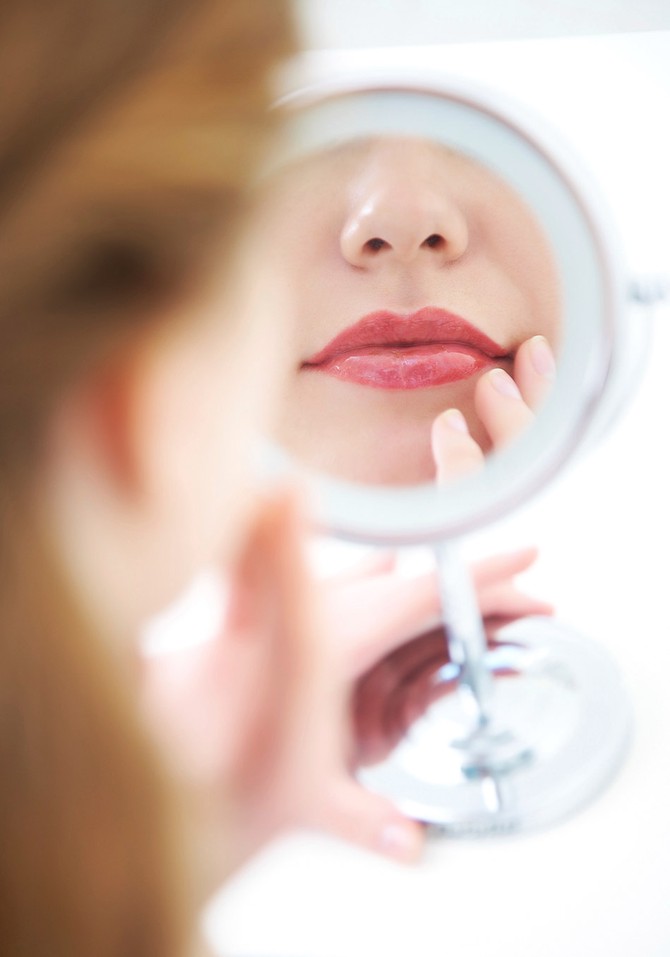5 Reasons You Still Have Acne
Here's what may be causing those breakouts, and what late bloomers can do to (finally) move past them.
By Corrie Pikul

Photo: Artem_Furman/iStock/360/Getty Images
You're One of the Unlucky 50 Percent
What's happening: Half of all women will suffer from acne at some point in their post-teen years, according to the American Academy of Dermatology. Acne is most often triggered by hormonal fluctuations during puberty (as you remember) as well as during pregnancy, perimenopause, menopause and even when you change birth control methods.
What it looks like: Cyst-looking bumps that hurt like the dickens and last forever. While younger acne takes over the T-zone, adult pimples usually appear on the chin and neck and along the jawline, says Jennifer Chwalek, MD, a dermatologist who practices with Union Square Laser Dermatology in New York. They'll be at their worst just before you get your period.
What to try: As a quick fix, your dermatologist may inject the site with inflammation-calming cortisone. To prevent these types of breakouts in the future, she may talk to you about spironolactone, an oral medication that blocks the androgen hormones often responsible for adult acne.
What it looks like: Cyst-looking bumps that hurt like the dickens and last forever. While younger acne takes over the T-zone, adult pimples usually appear on the chin and neck and along the jawline, says Jennifer Chwalek, MD, a dermatologist who practices with Union Square Laser Dermatology in New York. They'll be at their worst just before you get your period.
What to try: As a quick fix, your dermatologist may inject the site with inflammation-calming cortisone. To prevent these types of breakouts in the future, she may talk to you about spironolactone, an oral medication that blocks the androgen hormones often responsible for adult acne.

Photo: Jakub Pavlinec/Hemera/Thinkstock
You're Searching for the Elixir of Youth
What's happening: There are countless products to prevent and treat the signs of aging, but sampling several of them at once may inadvertently lead to pimples. In addition, many antiaging products have heavy-duty moisturizers to help with age-related dryness, and those can clog pores if you have acne-prone skin, Chwalek says.
What it looks like: You're not just spotty but also uncharacteristically shiny.
What to try: If you have acne-prone skin, look for products that are "oil-free" or "non-comedogenic" and try one at a time, says Chwalek. She also recommends keeping an eye out for these ingredients, which are more likely to aggravate acne: lanolin, squalene, alcohols (isopropyl myristate), oils (mineral oil, coconut butter, oil) and sodium lauryl sulfate.
What it looks like: You're not just spotty but also uncharacteristically shiny.
What to try: If you have acne-prone skin, look for products that are "oil-free" or "non-comedogenic" and try one at a time, says Chwalek. She also recommends keeping an eye out for these ingredients, which are more likely to aggravate acne: lanolin, squalene, alcohols (isopropyl myristate), oils (mineral oil, coconut butter, oil) and sodium lauryl sulfate.

Photo: IPGGutenbergUKLtd/iStock/Thinkstock
You Don't Have Adult Acne. (You Have This.)
What's happening: The good news: You don't have acne! The bad news: You may have perioral dermatitis, a skin condition that's common among middle-age women and is often mistaken for acne, says Chwalek. Experts don't really know what causes it, she adds, but it's a variant of rosacea and has been linked to the prolonged use of topical steroid creams and inhaled prescription steroid sprays, overuse of some heavy face creams, skin irritants and (weirdly) fluorinated toothpaste.
What it looks like: A red, bumpy rash around the mouth and lower face. It can also be scaly or irritated-looking.
What to try: Dermatologists usually treat this condition with a course of antibiotics or anti-inflammatories, says Chwalek.
What it looks like: A red, bumpy rash around the mouth and lower face. It can also be scaly or irritated-looking.
What to try: Dermatologists usually treat this condition with a course of antibiotics or anti-inflammatories, says Chwalek.

Photo: Pixland/Thinkstock
You're Overwhelmed by Adult Responsibilities
What's happening: Stress and exhaustion cause your cortisol levels to spike, and this can result in an increase in testosterone as well as pimply skin, says Chwalek, who is also a clinical instructor of dermatology at Mount Sinai Medical Center in New York. She adds that the edible "stress relievers" you're getting from the vending machine (i.e., cans of soda, bags of M&Ms) aren't helping, as foods like these, with a high glycemic index, can aggravate acne.
What it looks like: These are usually the same pimples you remember from your youth: red, white and annoying all over (they often appear in clusters).
What to try: Topical ointments with benzoyl peroxide and salicylic acid, the gold standards for treating teen acne, can be too harsh for adult skin. They often cause dryness, which can be a problem for women who are dealing with an age-related lack of moisture. Look for acne products with a lower concentration of pimple-busting active ingredients. (And try to get to bed earlier.)
What it looks like: These are usually the same pimples you remember from your youth: red, white and annoying all over (they often appear in clusters).
What to try: Topical ointments with benzoyl peroxide and salicylic acid, the gold standards for treating teen acne, can be too harsh for adult skin. They often cause dryness, which can be a problem for women who are dealing with an age-related lack of moisture. Look for acne products with a lower concentration of pimple-busting active ingredients. (And try to get to bed earlier.)

Photo: YanLev/iStock/Thinkstock
You Recently Renovated Your Powder Room
What's happening: You finally have your own private sink and vanity...which means you're paying more attention to your skin than ever before. Chwalek says that adult patients tend to spend more time in front of the magnifying mirror and are more likely to deal with breakouts by picking obsessively or slathering on multiple treatments.
What it looks like: Inflamed, red, scabby, positively volcanic. And because cell turnover slows with age, Chwalek says that picked pimples will take even longer to heal and are more likely to leave scars in woman of a certain age.
What to try: Those who can't keep their hands from their face might want to read this cautionary tale.
What it looks like: Inflamed, red, scabby, positively volcanic. And because cell turnover slows with age, Chwalek says that picked pimples will take even longer to heal and are more likely to leave scars in woman of a certain age.
What to try: Those who can't keep their hands from their face might want to read this cautionary tale.
Published 08/14/2014

